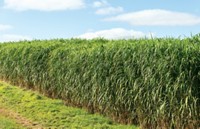Advertisement
Grab your lab coat. Let's get started
Welcome!
Welcome!
Create an account below to get 6 C&EN articles per month, receive newsletters and more - all free.
It seems this is your first time logging in online. Please enter the following information to continue.
As an ACS member you automatically get access to this site. All we need is few more details to create your reading experience.
Not you? Sign in with a different account.
Not you? Sign in with a different account.
ERROR 1
ERROR 1
ERROR 2
ERROR 2
ERROR 2
ERROR 2
ERROR 2
Password and Confirm password must match.
If you have an ACS member number, please enter it here so we can link this account to your membership. (optional)
ERROR 2
ACS values your privacy. By submitting your information, you are gaining access to C&EN and subscribing to our weekly newsletter. We use the information you provide to make your reading experience better, and we will never sell your data to third party members.
Environment
Cellulosic Biomass Takes Over
February 24, 2014
| A version of this story appeared in
Volume 92, Issue 8
The basic processes for converting cellulosic biomass to transportation fuels are already in widespread commercial use. Conversion typically starts with a pretreatment step, which makes cellulose from biomass feedstocks more accessible to enzymatic breakdown. Various enzymes then hydrolyze the cellulose into its component sugars, and microbes turn those sugars into fuels such as ethanol. Patenting in these areas frequently focuses on process improvements.
A 2013 patent application (WO 2013083816) filed by researchers at Shell Oil provides an example. In this case, the emphasis is on the pretreatment stage. Shell researchers used tertiary polyamide additives such as polyvinylpyrrolidones and poly(alkyl oxazolines) to enhance the breakdown of cellulosic biomass into its component sugars.
In one example from this patent, the researchers ground up and homogenized wheat straw with and without a polyvinylpyrrolidone additive. They then used enzymes to hydrolyze washed and unwashed samples of this mixture. They measured the extent of hydrolysis by looking at the amount of glucose produced.
The researchers found that the additive improved cellulose conversion by about 50%. Interestingly, they saw improvements in both the washed and unwashed samples. Because washing might be expected to remove the water-soluble pyrrolidones, the results suggest that the additive might be interacting directly with the biomass in some way.
Patent Picks is a collaborative effort by C&EN and CAS. This feature reports on trends CAS scientists observe from patents in the CAS databases, which now generate more than 70% of the new substances appearing in the literature.






Join the conversation
Contact the reporter
Submit a Letter to the Editor for publication
Engage with us on Twitter